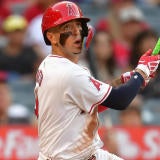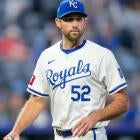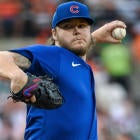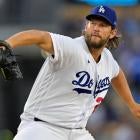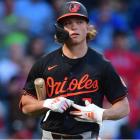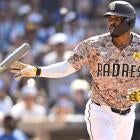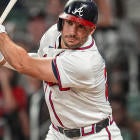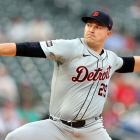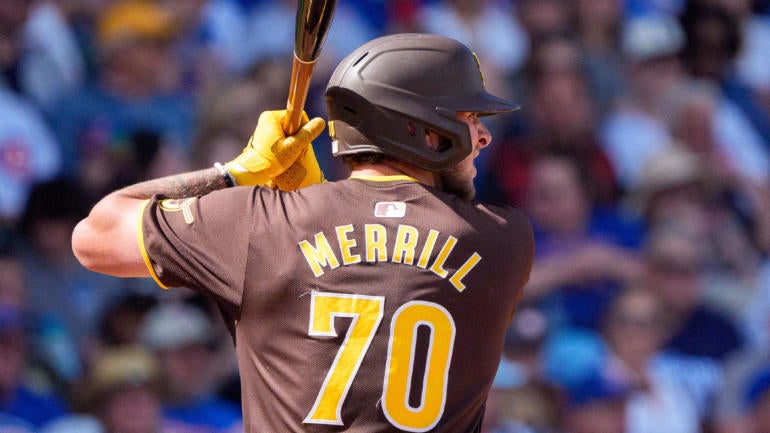
Back in early February, I wrote my Sleepers 1.0 column, focusing on bounce-back candidates, post-hype sleepers, and late-round targets going outside of the top 250 to consider for the ends of your Fantasy Baseball drafts, and there have definitely been some changes since then that you'll notice for Sleepers 2.0. To be clear, it's not necessarily because I don't stand by that first group of sleepers. It's just that a bunch of them no longer qualify!
I'm defining the term "sleeper" here pretty simply: Anyone with an ADP higher than 250 in NFBC leagues over the past two weeks. And that means, for instance, that guys like Tyler O'Neill, Vaughn Grissom, Taj Bradley, and Reid Detmers are no longer eligible for the list. The rest of the industry is starting to catch up, and that makes me feel better about those picks.
- Sleepers 2.0: Scott | Chris | Frank
- Breakouts 2.0: Scott | Chris | Frank
- Busts 2.0: Scott | Chris | Frank
So, we're making some new picks today. Of the 13 players listed below, six were part of my initial sleepers crop and seven are new names. Some of those new names are here because I may have just overlooked them in my first round. But some of them are moving up my draft boards because their situations have changed for the better since a month ago, for reasons I'll lay out below.
I still stand by my earlier picks, but as Opening Day gets closer, I'm whittling the list down. Here's who made the cut for Sleepers 2.0:
Alejandro Kirk, C, Blue Jays – 291.63 ADP
Opposing pitchers discovered a hole in Kirk's swing last season, taking advantage of his struggles against fastballs low in the zone over and over en route to a .250 average and dozens of weakly hit grounders. It's a hole Kirk will have to figure out how to fix, but the nice thing about making a late-round bet on him is, we've seen a must-start version of Kirk at the MLB level, when he hit .285/.372/.415 in 2022. Kirk still makes a ton of contact, with an all-field's approach that should help him get back to being a very good source of batting average at a position where there are very few of them. I'm willing to bet on a bounceback when the cost is as cheap as it tends to be with Kirk – he's C22 in NFC drafts right now.
Ty France, 1B, Mariners – 396.25
There are a handful of other first baseman I like as sleepers – most notably Anthony Rizzo, who was having a very good 2023 before misdiagnosed concussion issues derailed him. But I'll go with another bounceback candidate here in France, who struggled through his worst season ever in 2023, hitting .250/.337/.366 with just 12 homers in 158 games. France responsed to those struggles by following in teammate J.P. Crawford's footsteps by going to DriveLine baseball's training facilities in the offseason, with a goal of reworking his swing to generate more bat speed. France estimates he added about 3.5 mph to his swing this offseason, with the hope of generating power more consistently – France's max exit velocity was still 112.7 mph in 2023, an 83rd percentile mark, but his 87.5 mph average exit velocity was just 18th percentile. The raw power is here, and France continued to make plenty of contact last season. If he can tap into it more consistently, a return to the 20-homer range again with helpful batting averages isn't too much to ask at all.
Brandon Lowe, 2B, Rays – 260.39
Outside of the 2022 season, Lowe has never struggled to hit. He's a career .245/.334/.484 hitter at the MLB level overall, and his 21 homers in 109 games last season comes out to a 29-homer pace over 150 games. The question is whether he'll ever be able play anywhere close to that many games again, after playing just 174 over the past two seasons combined. However, while he did miss a month with lower back inflammation last season, the most promising thing for me is that he came back and it wasn't a concern after that. He actually improved after the injury, hitting .248/.347/.467 over his final 61 games, with a 32-homer, 189-run-plus-RBI pace. In a post-juiced ball era, there aren't many second basemen who can hit like that, and while Lowe's injury risk is real, he brings a stick very few players at the position can match, especially at his price.
Colt Keith, 3B, Tigers – 283.18
Keith is 3B-eligible in CBS Fantasy leagues, but he's going to play second base on Opening Day for the Tigers, and there's a lot to like about him. He's a consensus top-30 prospect, including a No. 20 ranking in Scott White's top Fantasy prospects list. Keith will be making his MLB debut as a 22-year-old, coming off a season where he hit .306/.380/.552 across both Double-A and Triple-A, with an OPS of .890 or better at both levels. And, unlike some of the other, more expensive prospects you'll see go off the board in drafts, Keith's spot on the Opening Day roster is all but assured after he signed an extension that gives the Tigers cost control for his first six seasons, with a couple of lucrative options tacked on at the end if he turns out to be a star. In the upper minors, Keith showed star potential, with an ability to hit the ball in the air, to the pull side, in a way that should help him maximize his very good raw power, and he's been able to do that in a way that hasn't required sacrificing contact (yet). Keith could end up being right there with Lowe and Nolan Gorman as the best power hitters at the 2B position, but he also could have enough pop to play up at third base, where power is easier to come by.
Jackson Merrill, SS, Padres – 600.14
Alright, here's another top prospect whose path to an Opening Day job looks to be at a different position than the one he's eligible at right now: In Merrill's case, outfield, where he has been playing to open Spring Training. The Padres have been one of the most aggressive teams in the league with promoting young players, and Merrill, who won't even turn 21 until after Opening Day looks to have a real chance to crack the roster as an outfielder. He played just 46 games at Double-A last season, hitting .273/.338/.444, solid numbers given his age and lack of experience. The hit tool is the biggest draw here, as Merrill struck out less than 12% of the time last season despite his age. But the thing that stands out in watching him is how big he is: Merrill is listed at 6-foot-3, and looks like a good candidate to grow into more power as he ages. He started hitting the ball in the air more when he got to Double-A, and while I'm not sure he'll ever be a 30-homer guy, projecting something like 15-15 with a helpful batting average as a rookie isn't asking too much – and that's certainly not the ceiling.
Max Kepler, OF, Twins – 269.69
And now we pivot from a bunch of top prospects to a 31-year-old with nearly 1,000 MLB games until his belt. Kepler is definitely an unexpected name here, but he showed real growth last season, posting by far the best quality of contact metrics of his career. Long a player who had to sell out to maximize his power swing, Kepler managed to increase his flyball rate in 2023 without a spike in power-and-average sapping pop ups, which have always been the biggest red mark on his profile. He hit the ball consistently hard (career-high 47% hard-hit rate), and while he had to sacrifice some contact to get there (career-high 21.6% strikeout rate), that's a tradeoff you'll happily take given his 28-homer pace. Kepler had both a career-high expected batting average of .271 and expected slugging percentage of .503, and he might be able to give similar production as someone like Anthony Santander or Jorge Soler at a 10-round discount.
Sal Frelick, OF, Brewers – 285.50
There are clear limitations in his game, as the 5-foot-9 Frelick will probably never hit for much more than even a dozen or so homers. But that might be his only weakness as a hitting prospect. He's going to make a ton of contact – even in the majors, he struck out just 16.6% of the time despite struggling overall – and he's going to run the bases well, with 15 steals in just 97 games between Triple-A and the majors last season. It's a profile that should lead to a pretty good batting average, with Steven Kwan as a cheap, but nonetheless pretty fair comp. The Brewers are trying Frelick out in the infield this spring, and it might not be long until he's triple eligible, with both second and third base on the list of positions he's trying to learn. A guy who hits .280 with 25-plus steals and potentially 85 runs if he hits at the top of the lineup has plenty of value, especially if you can slot them into three different lineup spots when needed.
Jasson Dominguez, OF, Yankees – 587.28
You'll have to wait a while for it to pay off, but Dominguez could very well be worth the wait. He made the majors as a 20-year-old after just nine games at Triple-A, and he made a heck of an impact last season, slugging four homers in just eight games before suffering a torn UCL in his right elbow that will likely keep him out for the first few months of this season. And, as anyone who had Bryce Harper in the first half of last season can attest, there's no guarantee a hitter comes back from Tommy John surgery and hits right away. But this is an extremely Fantasy friendly profile, as Dominguez hit 19 homers and stole 41 bases in 126 games between Double-A, Triple-A, and the majors. Yeah, there's some swing and miss here, though his 24.4% strikeout rate last season isn't really that concerning, given his age and advanced levels. He could be a Fantasy difference maker come the second half.
Edward Cabrera, SP, Marlins – 288.94
It's easy to oversimplify any player's path to success, but in Cabrera's case, there really is just one thing holding him back: Command. He's got wicked stuff, with a 27.2% strikeout rate that ranked in the 77th percentile among pitchers last season and a .199 expected batting average allowed that ranked in the 93rd percentile. He's got three different secondary pitches he can use to get whiffs with, and all three of his changeup, curveball, and slider have good results even when batters do make contact with them. But his spot in the Marlins rotation isn't at all assured at this point, solely because of his 15.2% walk rate, which mostly comes down to an inability to command his fastballs. He may never be able to overcome that issue, but if he can, I think there's still a legitimate ace-level ceiling here, and one that is well worth chasing at his cost.
Luis Severino, SP, Mets – 282.29
It has been suggested that Severino was tipping his pitches last season, and that's the best explanation I've seen for why he was so disappointing last season. His stuff mostly looked the same as it had in 2022, with spin rates and movement profiles mostly looking very similar as well. And it's worth noting that, despite injuries, Severino was still very good in 2022, posting a 3.18 ERA, 1.00 WHIP, and 112 strikeouts in 102 innings of work. Last season? Well, he didn't do anything well, and even his typically dominant slider had just a 25.6% whiff rate and .371 expected wOBA allowed, both of which were in the bottom 20th percentile in the league for sliders. Severino's stuff generally looked like it did when he was a dominant starting pitcher, and with his price continuing to tumble, I'm willing to bet that a change of scenery and an offseason working on what failed him last year and help him turn things around.
DL Hall, RP, Brewers – 359.64
Everything I said for Cabrera can pretty much be applied to Hall. He's put up ludicrous strikeout rates in the minors, including a 34.6% mark in 125.2 innings in Triple-A, along with an equally ludicrous 14% walk rate. The Orioles were seemingly ticketing him for the bullpen, but the trade to Milwaukee should give Hall his first real chance to stick in an MLB rotation, and I'm excited to see how the stuff plays here. If you play in H2H points leagues, you'll benefit from Hall being RP eligible if he makes the rotation, and there could be pretty huge upside if he can keep the walks around the 9-10% range.
Chris Paddack, RP, Twins – 297.00
In his first start of the spring Friday, Paddack didn't quite light up the radar gun the same way he did in his couple of appearances toward the end of last season, but what we saw was still pretty promising. He averaged 93.9 mph with his fastball, right where he was back in 2019 -- not a bad starting point in spring, especially with his spin rate with the pitch up above even his 2019 peaks. He also debuted a new, harder slider, a pitch that, if it sticks, would give Paddack a full four-pitch arsenal. He lost the feel for his fastball after a very good first season in the majors, and never really developed his non-changeup secondaries enough to make up for it. There are signs that he might have spent the offseason fixing both issues, and I love making him one of my last picks, especially in those H2H points leagues, where he also has RP eligibility that could make him a real difference maker.
Mason Miller, RP, Athletics – 251.45
Miller made it to the majors last season despite having thrown just 36.2 innings across his first two professional seasons, and while he showed really impressive stuff, he struggle to hold up as a starter. That's not exactly a surprise, and a move to the bullpen has kind of always felt inevitable, given Miller's profile. That move is coming this season, and I think Miller has the potential to be one of the best relievers in the league. In 72.2 innings of work as a professional, Miller has 107 strikeouts, a 37.8% strikeout rate that would basically match Devin Williams' mark from last season. Miller still has to be named the A's closer, and his ceiling will still be limited by, you know, being the A's closer. But we got a taste of what his stuff can do at the MLB level last season, and he looked more than up for the job. I'm excited to see what he can do while focusing on relieving full time. It could be special.


